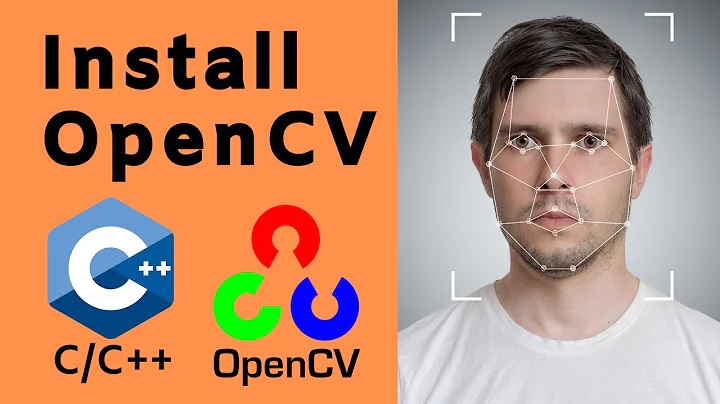Why is CMake designed so that it removes runtime path when installing
Solution 1
You may want to look into CMake's RPATH handling settings
This quote in particular seems relevant to your predicament:
By default if you don't change any RPATH related settings, CMake will link the executables and shared libraries with full RPATH to all used libraries in the build tree. When installing, it will clear the RPATH of these targets so they are installed with an empty RPATH.
You can set the RPATH that is set for installed binaries using the CMAKE_INSTALL_RPATH variable, for example:
SET(CMAKE_INSTALL_RPATH "${CMAKE_INSTALL_PREFIX}/lib")
and you can also disable the RPATH stripping during installation:
SET(CMAKE_INSTALL_RPATH_USE_LINK_PATH TRUE)
Solution 2
I just want to answer question 1. The why this is done. Alex already posted a solution how to change this behaviour.
The reason is that when you build it you really want to use the libraries the build script saw on your machine. If you build a whole stack of libraries for your app you want no mistake that they aren't picked by the library. Therefore it makes sense to use the full rpath to the library. Also you never move your application around between compilation and when it's debugged and run.
But when installed the usual case in the unix world was to use the shared /usr/lib and /usr/local/lib directories. They are usually picked up (unless LD_LIBRARY_PATH is used) and thats normally what you want.
As you see by my wording, all this is a mess because it includes so many implicit decisions how you organize your build and your deployment. It is one of the reasons why the term 'DLL hell' once only popular on Windows moved over to Unix when it became more widely used. There is no technical solution because its not a technical problem (that part is solved). Its an organizational problem and CMake has to decide about the one flavour it supports on a platform by default. And IMHO they have choosen wisely.
Related videos on Youtube
Comments
-
 Alaya almost 2 years
Alaya almost 2 yearsI built my shared library(I use a lib calculating the fibonacci number for example) myself and want to use it in my another c++ project built by
CMakeLet's say the shared library and headers located in
/path/to/my/lib, the shared librarylibfib.sois in/path/to/my/lib/liband the headerfib.his in/path/to/my/lib/includeand my own project located in/path/to/my/projectHere is my original
CMakeLists.txt:cmake_minimum_required(VERSION 3.2) project(learn-lib) set(CMAKE_CXX_FLAGS "-std=c++11 ${CMAKE_CXX_FLAGS}") set(FIB_INCLUDE "${FIB_PREFIX}/include") set(FIB_LIB "${FIB_PREFIX}/lib") set(EXE mybin) include_directories(${FIB_INCLUDE}) link_directories(${FIB_LIB}) add_executable(${EXE} main.cpp) target_link_libraries(${EXE} fib) install(TARGETS ${EXE} RUNTIME DESTINATION bin)And I use this script to build and install my project:
mkdir -p build_dir cd build_dir cmake -DFIB_PREFIX=/path/to/my/lib \ -DCMAKE_INSTALL_PREFIX=/path/to/my/project \ .. make make install cd ..Now, after running the install script, I got two executables, one in
build_dir, one in the install locationpath/to/my/project/bin, when running the program inbuild_dir, everything is fine, but when running the installed program, I get:./bin/mybin: error while loading shared libraries: libfib.so: cannot open shared object file: No such file or directory
After some searching on google and stackoverflow, I knew it seems that
CMakeremoved the runtime search path that is tied to the executable when building. I now know two ways to get it around:- Add the library path where
libfib.solocates to the environment variableLD_LIBRARY_PATH - Add
set_target_properties(${EXE} PROPERTIES INSTALL_RPATH_USE_LINK_PATH TRUE)into myCMakeLists.txt
So, my questions are:
- Why is
CMakedesigned so? When installing, why would it remove runtime path from executables instead of just copying the built executables to the install destination or whatever keeping the link path for the installed program? - Which way is the best practice(or is there a best practice) to eliminate this problem? To set the environment or to add
set_target_properties(...)intoCMakeLists.txt?
- Add the library path where
-
 Alaya over 8 yearsI find that if I add
Alaya over 8 yearsI find that if I addSET(CMAKE_INSTALL_RPATH_USE_LINK_PATH TRUE)afteradd_executable(${EXE} main.cpp), cmake still would strip the runtime path, whileset_target_properties(${EXE} PROPERTIES INSTALL_RPATH_USE_LINK_PATH TRUE)would always work regardless its position inCMakeLists.txt -
Holger over 2 yearsI have found the same as @Alaya on Mac OS. The RPATH handling in CMake seems off and the documentation not particularly helpful.
-
Dima Pasechnik over 2 yearsCMake has made a mess out of it. Mind you, their docs on linking, rpath, etc, don't even mention
ldconfig, and so CMake users are led up the garden path into believing that one has to put/usr/local/libintoLD_LIBRARY_PATH:-) -
Lothar over 2 yearsNo the problem is that linking is a mess on Unix and not taught in any programming class. It all works fine until deployment. So much now that there is a new job description now on the market defined as "Deployment Engineer" which is not DevOps.
-
Dima Pasechnik over 2 yearsGNU autoconf, libtool et al. manages the job on Unix well enough, whereas cmake can't even get
cmake --find-packageright :P -
Dima Pasechnik over 2 yearsAs if linking on Windoze is better - it's much worse if you ask me...
-
Louis Go about 2 years
CMAKE_INSTALL_RPATH_USE_LINK_PATHis a global cmake settings whileINSTALL_RPATH_USE_LINK_PATHis per target. I think that's the difference @Alaya found.








